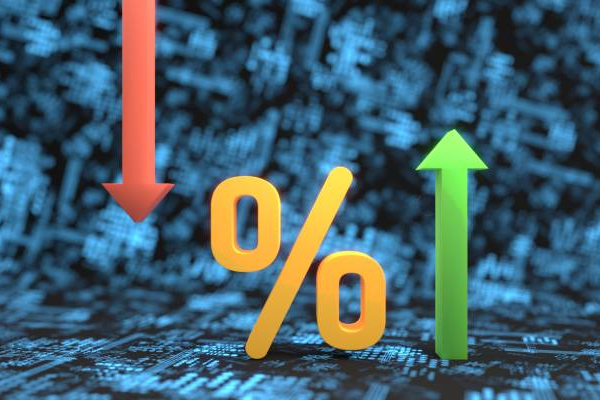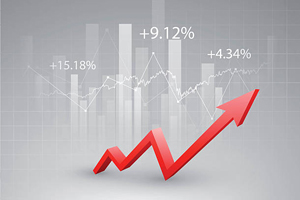Understanding the Difference Between Fixed and Variable Interest Rates
Explore the intricate world of interest rates with our comprehensive guide on Fixed and Variable Interest Rates Discover the stability of Fixed Rates, providing predictability in monthly payments, and the flexibility of Variable Rates, responsive to market changes Delve into key features, advantages, and factors influencing the choice between these rates Whether you re a seasoned borrower or a newcomer, empower yourself with the knowledge to make informed decisions and navigate the lending landscape confidently Uncover answers to common questions and gain insights into the factors shaping your financial choices Embark on this journey to demystify interest rates and align your decisions with your long-term financial goals
Welcome to a comprehensive exploration of the intricacies surrounding interest rates in the lending landscape. In this informative journey, we delve into the pivotal choice faced by borrowers – the decision between Fixed and Variable Interest Rates. Understanding the nuances of these two options is paramount, as they play a crucial role in shaping the financial dynamics of loans.
Fixed Interest Rates, characterized by their stability, provide borrowers with the assurance of consistent monthly payments throughout the entirety of the loan term. This predictability is a cornerstone for those who prioritize long-term financial planning, offering a clear outlook on their financial commitments and safeguarding against market fluctuations.
On the other side of the spectrum, Variable Interest Rates introduce an element of flexibility, responding to changes in market conditions. While offering potential cost savings, variable rates bring a level of unpredictability to monthly payments, requiring borrowers to navigate the dynamic landscape of interest rate fluctuations.
In this exploration, we meticulously dissect the key features, advantages, and considerations associated with both Fixed and Variable Interest Rates. We delve into the factors that influence the choice between these rates, considering aspects such as risk tolerance, financial goals, and the prevailing economic outlook.
Whether you are a seasoned borrower navigating the intricacies of interest rates or a newcomer seeking clarity in the lending realm, this comprehensive guide aims to equip you with the knowledge needed to make informed decisions. We address common questions, dispel uncertainties, and offer a thorough breakdown of the factors that borrowers should consider when choosing between Fixed and Variable Interest Rates.
Embark on this journey with us as we demystify the world of interest rates, empowering you to navigate the lending landscape with confidence and make choices aligned with your financial objectives.

Exploring the Differences Between Fixed and Variable Interest Rates
What defines Fixed Interest Rates, and how do they work?
Fixed Interest Rates are predetermined and remain constant throughout the loan term. Borrowers secure a set interest rate at the loan's initiation, providing stability by ensuring consistent monthly payments. This stability shields borrowers from market fluctuations and offers financial predictability over the long term.
Key Features of Fixed Interest Rates
The key features include a static interest rate, unchanged monthly payments, and protection against market volatility. Fixed Interest Rates provide borrowers with the confidence of knowing their payment obligations won't fluctuate, enabling better budgeting and financial planning.
Advantages of Choosing Fixed Interest Rates
Opting for Fixed Interest Rates offers the advantage of predictable payments. Borrowers can plan their finances with confidence, knowing that the interest rate and monthly payments will remain constant. This stability is particularly beneficial during economic uncertainties, providing a sense of financial security.
Considerations for Fixed Interest Rate Borrowers
While Fixed Interest Rates offer stability, borrowers should consider that the initial rate might be higher than variable rates. Additionally, if market interest rates decrease, fixed-rate borrowers miss out on potential savings. It's essential for borrowers to weigh the benefits of stability against potential cost differences.
How do Variable Interest Rates differ, and what benefits do they offer?
Variable Interest Rates fluctuate based on market conditions. While this introduces an element of uncertainty, borrowers may benefit from lower rates if market conditions are favorable. This flexibility allows borrowers to capitalize on potential interest savings during periods of decreasing market interest rates.
Understanding the differences between Fixed and Variable Interest Rates is crucial for borrowers in making informed decisions. While Fixed Rates offer stability, Variable Rates provide flexibility and the potential for cost savings. The choice between them depends on individual financial goals, risk tolerance, and prevailing market conditions.
Understanding Fixed Interest Rates
How do Fixed Interest Rates differ from other types of interest rates?
Fixed Interest Rates distinguish themselves by remaining constant throughout the entire loan term. Unlike variable rates that can fluctuate, fixed rates provide borrowers with a stable and predictable interest rate environment from the start to the end of the loan.
What factors contribute to the stability of Fixed Interest Rates?
The stability of Fixed Interest Rates is grounded in the initial agreement between the borrower and the lender. Once the interest rate is set, it remains unchanged, irrespective of market fluctuations. This stability is maintained throughout the entire duration of the loan, providing borrowers with a reliable and predictable financial commitment.
How do Fixed Interest Rates impact monthly payments?
Fixed Interest Rates result in consistent monthly payments, offering borrowers a clear and predictable repayment structure. Knowing exactly how much they need to pay each month simplifies budgeting and eliminates the uncertainty associated with varying interest rates. This consistency provides financial security and facilitates better financial planning.
Are there any potential drawbacks to choosing Fixed Interest Rates?
While Fixed Interest Rates offer stability, borrowers should be aware that they might start with a higher rate compared to variable rates. Additionally, if market interest rates decrease during the loan term, fixed-rate borrowers may miss out on potential interest savings. It's essential for borrowers to carefully weigh these factors against the benefits of stability when making their decision.
How can borrowers maximize the advantages of Fixed Interest Rates?
Borrowers can make the most of Fixed Interest Rates by aligning their choice with their financial goals and risk tolerance. If stability and predictability are top priorities, choosing a fixed-rate loan provides peace of mind throughout the repayment period. It's crucial for borrowers to understand their unique financial situation and choose an interest rate structure that aligns with their long-term objectives.
Key Features of Fixed Interest Rates
Consistency in Interest Rates
One of the primary features of Fixed Interest Rates is their unwavering nature. Once set at the beginning of the loan term, the interest rate remains constant throughout, providing borrowers with a predictable financial commitment. This consistency is advantageous for those seeking stability and assurance in their monthly payments.
Unchanging Monthly Payments
Fixed Interest Rates result in monthly payments that remain the same throughout the entire loan period. This predictability enables borrowers to plan their budgets effectively, as they won't encounter fluctuations in their payment obligations. Knowing the exact amount due each month simplifies financial management and reduces uncertainty.
Protection Against Market Volatility
Fixed Interest Rates shield borrowers from the impact of market fluctuations. While variable rates may rise or fall based on market conditions, fixed rates offer a safeguard against sudden increases in interest rates. This protection is particularly valuable during economic uncertainties, providing borrowers with financial security and peace of mind.
Predictable Long-Term Financial Planning
With Fixed Interest Rates, borrowers can engage in long-term financial planning with confidence. The stability in interest rates and monthly payments allows individuals to project their financial commitments accurately over the entire duration of the loan. This predictability is beneficial for those who prefer a clear and transparent financial outlook.
Fixed Rate vs. Variable Rate Comparisons
While exploring the key features of Fixed Interest Rates, it's essential to compare them with Variable Interest Rates. Understanding the differences helps borrowers make informed decisions based on their financial goals and risk tolerance. Factors such as market conditions, economic outlook, and individual preferences play a crucial role in determining the suitability of fixed-rate loans.
Advantages of Choosing Fixed Interest Rates
Stable Monthly Payments
One of the primary advantages of opting for Fixed Interest Rates is the stability it provides in monthly payments. Borrowers can plan their budgets with confidence, as the fixed rate ensures that the monthly payment remains constant throughout the entire loan term. This predictability facilitates financial management and eliminates the uncertainty associated with fluctuating interest rates.
Financial Predictability and Planning
Choosing Fixed Interest Rates offers borrowers a high level of financial predictability. With a known and unchanging interest rate, individuals can plan their long-term financial commitments with assurance. This stability is especially beneficial for those who prefer a clear and transparent outlook on their financial obligations, making it easier to manage expenses and savings goals.
Protection Against Interest Rate Increases
Fixed Interest Rates act as a safeguard against potential increases in market interest rates. While variable rates may rise in response to market conditions, fixed rates remain constant, providing borrowers with protection from sudden and unexpected spikes in interest rates. This protection is particularly valuable during periods of economic uncertainty when interest rate fluctuations are more unpredictable.
Reduced Impact of Market Volatility
Fixed Interest Rates help borrowers mitigate the impact of market volatility. By locking in a consistent rate, individuals shield themselves from the ups and downs of the financial market. This reduced exposure to market fluctuations contributes to a sense of financial security, as borrowers can confidently anticipate their monthly payment obligations without being affected by external economic factors.
Easier Budgeting for the Long Term
For those who prioritize long-term financial planning, Fixed Interest Rates offer an advantage. The stability they provide makes it easier for borrowers to budget for the entire duration of the loan. Knowing that the interest rate and monthly payments will not change allows individuals to create a sustainable financial plan that aligns with their goals and obligations over an extended period.
Considerations for Fixed Interest Rate Borrowers
Initial Interest Rate Comparison
Fixed Interest Rate borrowers should carefully compare the initial rate offered with that of variable rates. While fixed rates provide stability, they might start slightly higher than variable rates. Understanding this difference is crucial for borrowers to make informed decisions based on their current financial situation and future expectations.
Potential Missed Savings in a Falling Rate Environment
Borrowers opting for Fixed Interest Rates should be aware that if market interest rates decrease during the loan term, they may miss out on potential interest savings. Variable rate borrowers can benefit from falling rates, while fixed-rate borrowers remain locked in at the agreed-upon rate. Evaluating the likelihood of market rate changes is essential when considering fixed-rate loans.
Long-Term vs. Short-Term Financial Goals
Considering the duration of the loan and personal financial goals is important for fixed-rate borrowers. If the plan involves holding the loan for an extended period, the stability of fixed rates may align with long-term financial objectives. However, if short-term flexibility is a priority, variable rates might be more suitable, especially if there is an anticipation of market rate decreases.
Economic Outlook and Interest Rate Trends
Fixed Interest Rate borrowers should stay informed about the economic outlook and interest rate trends. Understanding the broader economic context can help borrowers gauge the likelihood of interest rate changes during the loan term. Monitoring financial news and consulting with financial experts can provide valuable insights to make informed decisions.
Flexibility in Refinancing Options
Borrowers should consider the flexibility in refinancing options when choosing Fixed Interest Rates. While fixed rates offer stability, having the ability to refinance in the future may be advantageous, especially if interest rates decrease significantly. Evaluating the terms and conditions related to refinancing can provide borrowers with a potential strategy for adjusting their loan structure if needed.
Understanding Variable Interest Rates
Dynamic Nature of Variable Interest Rates
Variable Interest Rates, also known as adjustable or floating rates, are characterized by their dynamic nature. Unlike fixed rates, variable rates can change over the course of the loan term based on market conditions. Understanding this dynamic nature is crucial for borrowers considering variable-rate loans.
Factors Influencing Variability
Several factors influence the variability of interest rates, including changes in the overall economy, inflation rates, and central bank policies. Variable rates are often tied to benchmark interest rates, such as the prime rate, and can fluctuate in response to shifts in these economic indicators. Borrowers need to stay informed about these factors to anticipate potential changes in their interest rates.
Potential for Interest Rate Decreases
One of the advantages of Variable Interest Rates is the potential for decreases if market interest rates decline. Borrowers may benefit from lower interest payments, resulting in potential cost savings. This flexibility can be advantageous in a falling rate environment, allowing borrowers to take advantage of favorable market conditions.
Risk of Interest Rate Increases
While variable rates offer the potential for savings, there is also the inherent risk of interest rate increases. If market conditions lead to rising interest rates, borrowers with variable-rate loans may experience higher monthly payments. Assessing one's risk tolerance and considering the current economic climate is essential for borrowers evaluating variable-rate options.
Interest Rate Caps and Limits
Variable Interest Rate loans often come with interest rate caps and limits to protect borrowers from excessive rate increases. These caps define the maximum amount by which the interest rate can rise over specific periods. Understanding these caps is crucial for borrowers, providing a level of predictability and limiting potential financial strain in the event of significant market fluctuations.
Key Features of Variable Interest Rates
Dynamic Interest Rate Adjustments
The primary feature of Variable Interest Rates is their dynamic nature. These rates can adjust periodically throughout the loan term based on market conditions. This flexibility allows borrowers to experience changes in their interest rates, either up or down, depending on various economic factors.
Linked to Market Benchmarks
Variable Interest Rates are often linked to market benchmarks, such as the prime rate or the London Interbank Offered Rate (LIBOR). The rates associated with these benchmarks influence the interest rate on variable-rate loans. Understanding the connection between the loan's rate and these benchmarks is essential for borrowers to anticipate potential changes.
Potential for Cost Savings
One of the notable advantages of Variable Interest Rates is the potential for cost savings. In a declining interest rate environment, borrowers with variable-rate loans may benefit from lower interest payments, resulting in overall savings compared to fixed-rate counterparts. This potential for savings is an attractive feature for borrowers who can adapt to market fluctuations.
Risk of Interest Rate Increases
Variable rates come with the inherent risk of interest rate increases. If market conditions lead to rising interest rates, borrowers may experience higher monthly payments. Assessing one's risk tolerance and evaluating the current economic climate are crucial steps for borrowers considering variable-rate options, as they need to be prepared for potential increases in their interest obligations.
Interest Rate Caps and Floors
To provide borrowers with a level of protection, Variable Interest Rate loans often come with interest rate caps and floors. Caps limit the maximum amount by which the interest rate can increase during specific periods, providing a safeguard against drastic rate hikes. Understanding these caps and floors is essential for borrowers to manage potential risks and uncertainties associated with variable rates.
Advantages of Choosing Variable Interest Rates
Flexibility in Changing Market Conditions
One of the primary advantages of opting for Variable Interest Rates is the flexibility they offer in adapting to changing market conditions. As these rates are linked to market benchmarks, borrowers may benefit from lower interest payments in a declining interest rate environment. This adaptability can result in significant cost savings over the life of the loan.
Potential for Initial Cost Savings
Borrowers choosing Variable Interest Rates may experience initial cost savings compared to fixed-rate loans, especially if market conditions are favorable at the loan's initiation. The potential for lower initial interest rates can be advantageous for borrowers looking to minimize their upfront costs and maximize their financial flexibility.
Opportunity to Benefit from Falling Interest Rates
Variable Interest Rates provide an opportunity for borrowers to benefit from falling interest rates. If market conditions lead to a decrease in benchmark rates, borrowers with variable-rate loans may experience lower interest payments, contributing to overall cost savings. This potential for financial gain is appealing for borrowers who can navigate market fluctuations.
Interest Rate Caps for Protection
Variable-rate loans often come with interest rate caps, limiting the maximum amount by which the interest rate can increase during specific periods. These caps provide borrowers with a level of protection, ensuring that even in a rising interest rate environment, there are limits to how much their interest payments can increase. This built-in protection adds a layer of security for variable-rate borrowers.
Ability to Capitalize on Economic Trends
Borrowers choosing Variable Interest Rates have the ability to capitalize on favorable economic trends. If the economic outlook suggests a period of declining interest rates, variable-rate borrowers can take advantage of lower rates, resulting in potential long-term savings. This adaptability allows borrowers to align their loan structure with prevailing economic conditions.
Considerations for Variable Interest Rate Borrowers
Evaluating Risk Tolerance
Variable Interest Rate borrowers should carefully assess their risk tolerance. While these rates offer flexibility and potential cost savings, they come with the inherent risk of interest rate increases. Borrowers need to consider their comfort level with potential fluctuations in their monthly payments and whether they can adapt to changing interest rate environments.
Monitoring Economic Indicators
Staying informed about economic indicators and market trends is crucial for borrowers with variable-rate loans. Factors such as inflation rates, central bank policies, and overall economic conditions can influence interest rates. Regularly monitoring these indicators allows borrowers to anticipate potential changes in their interest rates and make informed financial decisions.
Understanding Rate Adjustment Mechanisms
Variable-rate borrowers should have a clear understanding of how and when their interest rates may adjust. These adjustments are typically tied to market benchmarks, and the loan agreement should outline the frequency and limits of these changes. Understanding the rate adjustment mechanisms helps borrowers anticipate and plan for potential fluctuations in their monthly payments.
Considering Loan Duration and Market Outlook
The duration of the loan and the prevailing market outlook are crucial considerations for variable-rate borrowers. If the loan term is relatively short, the impact of interest rate fluctuations may be limited. Additionally, considering the current economic climate and forecasts can help borrowers gauge the likelihood of interest rate changes during the loan term and align their loan structure with market expectations.
Reviewing Interest Rate Caps and Floors
Variable-rate loans often come with interest rate caps and floors to protect borrowers from extreme rate changes. Reviewing these caps is essential, as they define the maximum amount by which the interest rate can increase during specific periods. Understanding these limits provides borrowers with a sense of security and helps manage potential financial risks associated with variable rates.
Comparing Fixed and Variable Interest Rates
Stability vs. Flexibility
Fixed Interest Rates: Provide stability with a constant interest rate throughout the loan term. Borrowers benefit from predictable monthly payments, making it easier to budget and plan for the long term.
Variable Interest Rates: Offer flexibility as they can change based on market conditions. While this flexibility can lead to potential cost savings, it also introduces variability in monthly payments, requiring borrowers to adapt to changing interest rates.
Initial Costs and Savings
Fixed Interest Rates: Often have higher initial interest rates compared to variable rates. While this may result in slightly higher initial costs, borrowers benefit from the stability of knowing their rate won't increase.
Variable Interest Rates: Tend to start lower than fixed rates, potentially offering initial cost savings. However, borrowers should consider the possibility of rate increases in the future.
Predictability vs. Potential Savings
Fixed Interest Rates: Provide predictability with consistent monthly payments. This stability is advantageous for long-term financial planning and individuals who prefer a clear outlook on their financial obligations.
Variable Interest Rates: Offer the potential for savings, especially if market conditions lead to lower interest rates. However, the unpredictable nature of variable rates means borrowers must be prepared for the possibility of increased payments.
Protection Against Market Volatility
Fixed Interest Rates: Shield borrowers from market fluctuations, offering protection against sudden increases in interest rates. This stability is particularly valuable during economic uncertainties.
Variable Interest Rates: Expose borrowers to market changes, with the potential for both increases and decreases in interest rates. Interest rate caps may provide some protection, but borrowers should carefully evaluate their risk tolerance.
Long-Term vs. Short-Term Considerations
Fixed Interest Rates: Suited for those with long-term financial goals and a preference for stability. Fixed rates are ideal for individuals who prioritize consistent monthly payments over potential short-term interest rate fluctuations.
Variable Interest Rates: May be attractive for individuals with short-term financial goals or those comfortable with adapting to market changes. Variable rates offer the potential for short-term cost savings but come with the risk of unpredictable increases.
Factors Influencing the Choice Between Fixed and Variable Rates
Financial Goals and Stability
When considering the choice between fixed and variable rates, borrowers should assess their financial goals and need for stability. If the priority is long-term financial planning and predictability in monthly payments, a fixed rate may be more suitable. However, if short-term flexibility and potential cost savings are prioritized, a variable rate could be considered.
Risk Tolerance and Market Conditions
Borrowers need to evaluate their risk tolerance and the prevailing market conditions. Those with a higher risk tolerance who can adapt to changes in interest rates may be comfortable with variable rates. On the other hand, individuals with a lower risk tolerance may prefer the stability offered by fixed rates, especially during uncertain economic times.
Loan Duration and Exit Strategy
The duration of the loan and the borrower's exit strategy play a significant role in the decision-making process. For short-term loans or situations where refinancing is anticipated, variable rates may offer initial cost savings. For longer-term commitments, fixed rates provide a sense of security and consistency over the entire loan term.
Interest Rate Outlook and Economic Trends
Staying informed about the current interest rate outlook and broader economic trends is essential. Borrowers should consider economic indicators, central bank policies, and forecasts to gauge the likelihood of interest rate changes. This information can inform the decision between fixed and variable rates based on the borrower's expectations and market projections.
Interest Rate Caps and Protection Measures
Understanding the protection measures associated with variable rates is crucial. Borrowers should carefully review interest rate caps and other safeguards in place to limit the impact of rate increases. This evaluation ensures that even with a variable rate, there are measures in position to prevent excessive and unpredictable changes in monthly payments.
FAQs about Fixed and Variable Interest Rates
Q1: What is the main difference between fixed and variable interest rates?
A1: The primary difference lies in their stability. Fixed interest rates remain constant throughout the loan term, providing predictability in monthly payments. Variable rates, however, can fluctuate based on market conditions, offering flexibility but introducing variability in payments.
Q2: How do fixed rates protect borrowers from market fluctuations?
A2: Fixed rates offer protection by shielding borrowers from market volatility. The interest rate remains unchanged, providing stability and safeguarding against sudden increases in interest rates, making them ideal for those seeking a consistent and predictable financial commitment.
Q3: Can variable rates ever be more advantageous than fixed rates?
A3: Yes, variable rates can be advantageous, especially in a declining interest rate environment. Borrowers with variable-rate loans may benefit from lower interest payments, potentially resulting in cost savings. However, this advantage comes with the risk of rate increases in the future.
Q4: How does the choice between fixed and variable rates impact long-term financial planning?
A4: The choice significantly impacts long-term financial planning. Fixed rates provide stability for individuals with long-term financial goals, allowing for consistent monthly payments. Variable rates, on the other hand, offer short-term flexibility, making them suitable for those comfortable with adapting to market changes.
Q5: What factors should borrowers consider when deciding between fixed and variable rates?
A5: Borrowers should consider factors such as their financial goals, risk tolerance, loan duration, and the prevailing economic outlook. Understanding the protection measures associated with variable rates, including interest rate caps, is crucial for making an informed decision based on individual circumstances.










